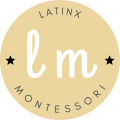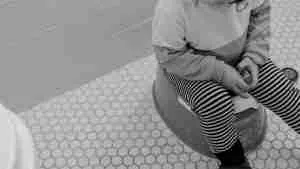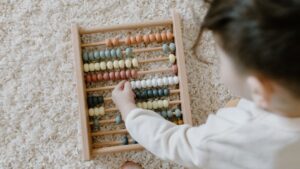
Difference Between Montessori And Waldorf
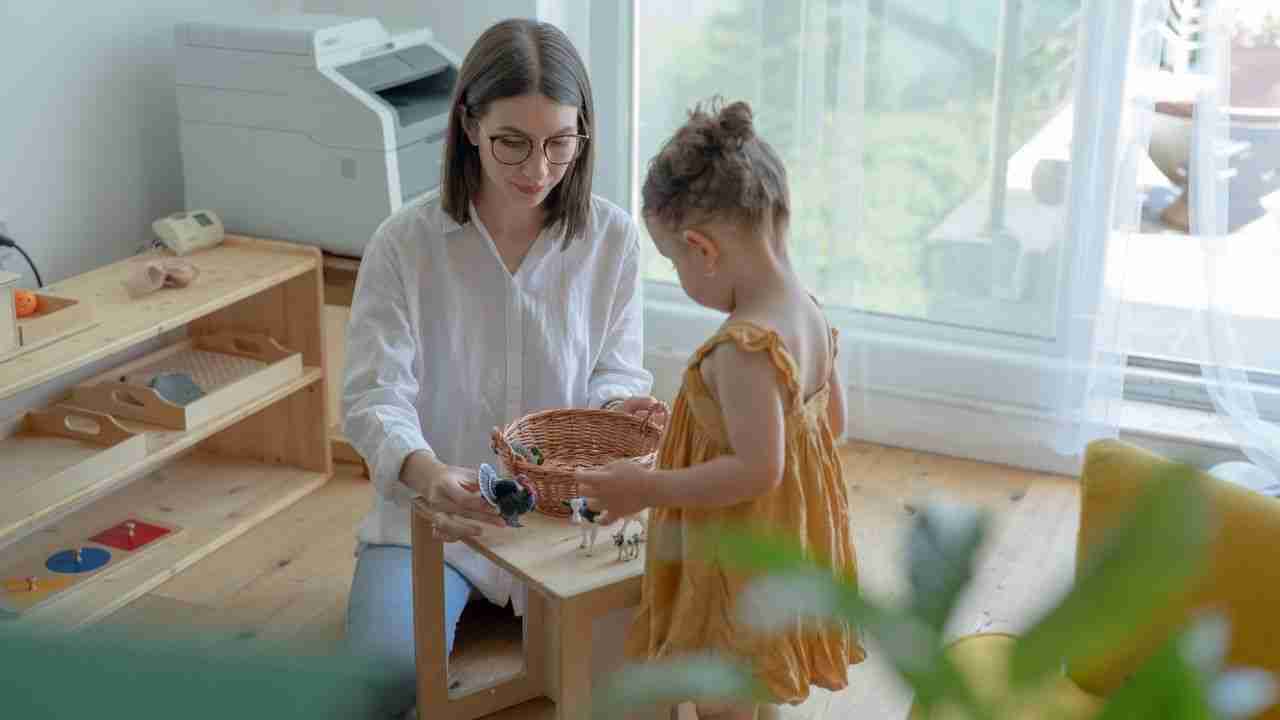
*Disclosure: I only recommend products I would use myself and all opinions expressed here are our own. This post may contain affiliate links that at no additional cost to you, I may earn a small commission. Thank you for your support!
Share this post
Both methods of education prioritize the individual needs of your child and encourage self-directed learning and exploration.
But what exactly is the difference between Montessori and Waldorf? I will explain both approaches to education in the simplest way possible.
Montessori prioritizes individualized learning and structured classrooms for independent thinking, while Waldorf emphasizes holistic development through arts, nature, and imaginative play.
We chose the Montessori approach because it aligns with our parenting style but we also apply some of the Waldorf philosophies because it further nurtures our child’s development.
By the end of the article, you will have a solid understanding of each philosophy so you can select the best school for your child or apply the method that resonates with you at home.
Montessori vs Waldorf comparison table
Montessori | Waldorf | |
Philosophy | Natural curiosity, independent learning, real-life experiences | Emphasize creativity, imagination, and fantasy |
Curriculum | Emphasizes early academic subjects | Flexible curriculum with arts and nature, delays academics |
Learning environment | Structured and orderly classrooms | Warm and homely classrooms with natural materials |
Use of technology | Limited or no technology use | Limited or no technology use |
Age groups in classrooms | Often mixed-age groupings with 3-year span | Grouped by age |
Introduction of lessons | Individual lessons given by Guides | Lessons are given in group settings |
Play-based learning | Structured play with learning materials | Imaginative play and storytelling |
Teacher-student | Teacher-student relationship | Strong teacher-student relationships, same teacher over several years |
Difference between Montessori and Waldorf
Let’s look at the differences between Montessori and Waldorf by examining each approach separately.
Montessori Philosophy
The Montessori philosophy is based on the philosophy of Dr. Maria Montessori, who was an Italian physician and educator and opened her first Montessori School in Italy in 1907.
This philosophy is child-centered and involves giving children choices of learning activities while the teacher acts as a guide instead of giving instructions and directing all of the learning.

Follow the child
Dr. Montessori observed that children are naturally curious and they have an innate desire to learn about the world around them.
One of her most famous quotes is “Follow the Child,” and this truly represents the Montessori philosophy.
It means that we, the adults, need to observe our children to see what their interests and needs are.
This way we can adjust their learning environment accordingly to make sure that they are always being met with the right level of developmental challenge.
So essentially we are creating an environment to meet our children’s needs, and they use this environment to develop themselves.
Independence
There is a focus on independence and self-sufficiency in the Montessori approach. One way they become independent is by giving them freedom within limits.
Children independently choose activities that align with their current interests and this helps them learn at their own pace.
Realist books and images
Montessori environments typically only include realistic images and books with no fantasy or fictional characters.
Real images resonate with a child’s innate desire to understand and connect with the real world.
This is why you will find books about emotions featuring real images of people rather than illustrations.
Academic subjects
In Montessori, the main focus is the development of children through practical life skills like cleaning and gardening.
But at around age three, children are introduced to academic subjects like math, language, and cultural studies.
Child-size furniture and materials
Montessori classrooms have child-sized furniture and tools made of natural and high-quality materials such as wood and glass.
The room is highly organized with learning materials in baskets or wooden trays and are placed on low open shelves to make it easily accessible to children.
A lot of the materials you see in a Montessori classroom like the sound cylinders, the pink tower, and cylinder blocks were designed by Dr. Montessori.
She tested them out and modified them so children could be fully engaged as they worked with these materials.
There are also clearly marked areas in the classroom for the various subjects including language, math, social development, culture and sciences, and practical life activities.
Freedom of movement
The way the room is organized allows children to move about the room as they complete various activities rather than sitting at a desk all day.
Children also learn to respect everyone’s space and not interrupt as another child works on the activity.
Individual lessons
In a traditional school, you will never see a teacher standing at the front of the room with children sitting at desks and everybody learning at the same time.
But in a Montessori school, Guides give one-on-one lessons because they can tailor their instructions to meet the specific needs and interests of each child.
The Montessori Guide can also adapt the pace and style of instruction to match the child’s readiness and learning preferences.
Mixed age groups
Montessori classrooms typically have mixed age groups spanning a full 3 years. Some schools have Montessori programs for babies and infants but are hard to find.
You’ll find classes for children from ages 3 to 6, 6 to 9, etc. This encourages learning and collaboration and fosters a sense of community and empathy among children.
No pretend play
Other items you will not find in a Montessori school are play kitchens, doll houses, or anything that could be used for imaginative play.
As we mentioned before, the Montessori philosophy promotes connection to reality and encourages children to gain experience through real-world activities.
The Waldorf approach
The Waldorf approach is based on the philosophy of Rudolf Steiner, who was an Austrian philosopher and a social reformer.
Believe it or not, he opened the first Waldorf school in a cigarette factory in Germany in 1919.
He began teaching the children of factory workers at the Waldorf Astoria Cigarette Company, which is how the philosophy got its name.
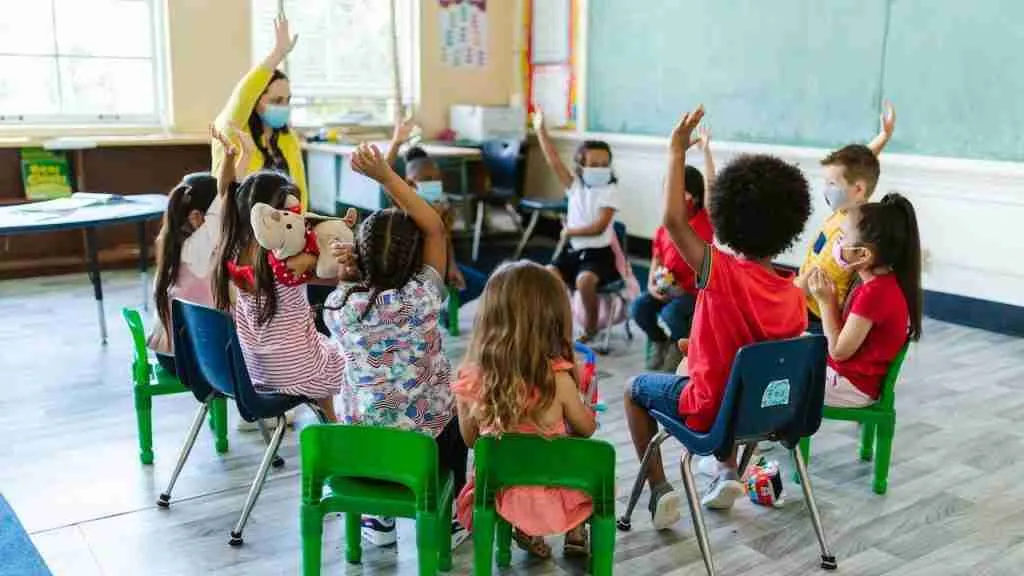
The head, heart, and hands
Waldorf’s mantra is “education of the head, heart, and hands.”
The approach focuses on a child’s intellectual development (“head”), the nurturing of emotional and moral qualities (“heart”), and practical, hands-on skills and abilities (“hands”).
Play-based learning
The Waldorf approach integrates play-based learning with teacher guidance. Play is central to the method that promotes creativity and imagination.
However, this play is structured and directed by teachers to ensure that it aligns with Waldorf’s educational goals and values.
Imaginative play
Waldorf education places a strong emphasis on imaginative play as a fundamental element of a child’s development. It encourages creativity, problem-solving, and emotional development.
But they also include storytelling and fantasy as a way to nurture a child’s imagination.
No academics
Instead of introducing reading, writing, and arithmetic at an early age, Waldorf allows children to explore their world through play, movement, and artistic activities during the early years.
This is because they believe that children benefit more from a relaxed and holistic approach that nurtures their physical, emotional, and creative development before starting formal academics.
Classroom setup
Waldorf classrooms are designed to create a home-away-from-home atmosphere. They use lots of pastel colors, wooden toys, essential oils, and candles.
This sort of fosters a sense of security and comfort.
You will also see walls decorated with artwork from students, which adds a personal touch to the environment.
The lighting is warm and welcoming and contributes to the overall atmosphere of tranquility and creativity.
Classroom age
All of the children in a Waldorf classroom are the same age and the teacher usually stays with the same group of children for about 5 and 8 years.
This creates a positive teacher-student bond and also helps the teacher gain a comprehensive understanding of each child’s unique strengths, challenges, and developmental progress.
Similarities between Montessori and Waldorf
Although both approaches have their unique philosophy, they do share some similarities. Let’s take a look at what Montessori and Waldorf have in common.
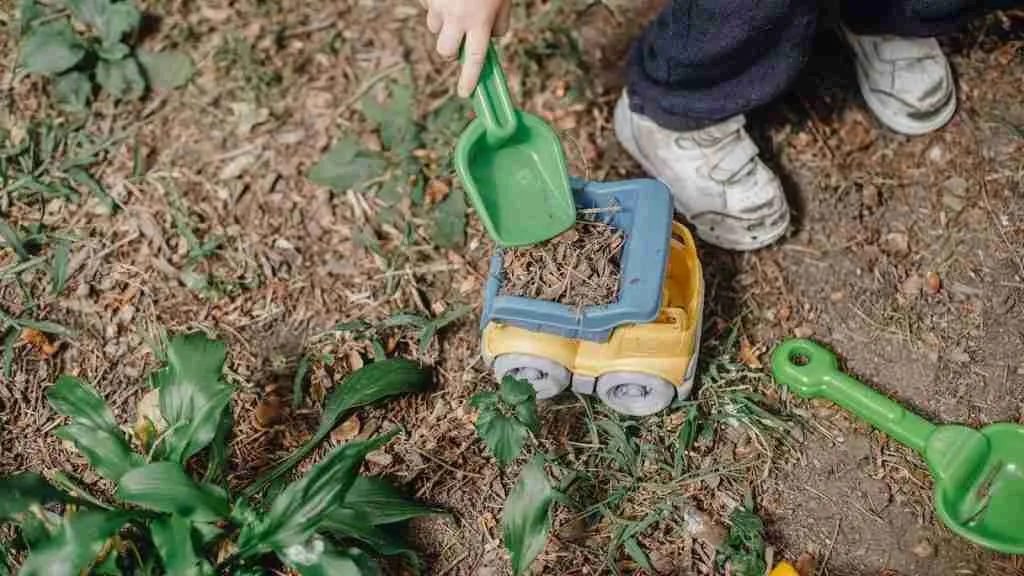
Child-centered approach
Both Montessori and Waldorf follow a very holistic approach to education. The goal is to educate the whole child.
Both philosophies believe that children are unique individuals with their own developmental timelines and interests.
Practical life skills
Montessori and Waldorf value the development of practical life skills.
Whether it’s through Montessori’s practical life activities or Waldorf’s focus on practical and artistic skills, both methods see these skills as vital for your child’s independence and growth.
Hands-on learning
Both approaches also tend to focus on concrete learning with hands-on learning materials.
This is because hands-on learning actively engages their senses and allows them to explore, experiment, and discover the world around them.
This tactile approach also fosters a deeper sense of curiosity and self-directed learning, which ultimately empowers them to be more independent and resourceful.
Natural materials
You will also notice that both approaches use high-quality natural materials such as wood which is the most common material you will see in a Montessori or Waldorf setting.
You will not find plastic or battery-operated toys or similar items, mainly because these types of toys only entertain and fascinate a child rather than promote their development.
Limited use of technology
Both Montessori and Waldorf schools or homes tend to limit or even avoid the use of technology, particularly in the early years.
They prioritize real-world experiences and prefer human interactions over screen time.
Respect for the child
Both philosophies also emphasize a deep respect for the child. And this is something we do at home.
We give our daughter space when she needs it, we respect her decisions and always follow her needs and interests.
All-weather education
The weather should not interfere with your child’s development. This means that regardless of what the weather is, the children spend a lot of time outdoors.
If it’s snowing, they play in the snow. If it is raining, they play in the rain and jump in puddles, if it is hot, they do a lot of water play.
Love for learning
And finally, both approaches seek to cultivate a love for learning.
These methods foster a true passion for gaining knowledge to understand and engage with the world around them.
As you can see, there are a few similarities between both methods of education that we also agree on.
So what’s better, Montessori or Waldorf?
This is where you have to take the similarities and differences into consideration.
For us, the Montessori philosophy closely aligns with our parenting style and beliefs and this is why we are raising our daughter using the Montessori approach.
Plus she is in a great Montessori school where her developmental needs are being met. We also apply this method in our home to further nurture her development.
So the bottom line is, if you want your child to be independent, responsible, and confident, then the Montessori approach is right for you.
If you want to nurture your child’s creativity, imagination and hold off on academics, then Waldorf is a great choice.
It’s OK to use both Montessori and Waldorf
Can you mix Waldorf and Montessori?
If you are looking for a Montessori or a Waldorf school, most likely you will have to choose one because there aren’t any schools that apply both philosophies.
But if you are a stay-at-home parent, homeschooling your child, or simply want to apply these philosophies at home, you have more flexibility and use a little of both approaches.
We use the Montessori method at home for about 95% of the time but we also emphasize nature as a way to learn about our environment.
There is no fantasy in our home but one day our daughter will want to dress up as a princess or other fictional characters and we are going to allow that.
We also allow our daughter to pretend-play using her play kitchen, dolls, and toys that nurture her creativity and imagination.
Play is crucial in brain development, we have a course on the benefits of play where we provide you with the tools to nurture your child’s independence, confidence, and a love for learning, all through play.
So go ahead and enroll in this course. We highly recommend it.
What to do next?
There you have it. These are the differences between Montessori and Waldorf education.
If you go the Montessori route, I have some articles to help you create a Montessori home to nurture your child’s development.
I also recommend some of the best Montessori toys and sensorial activities that foster brain development from birth to childhood.
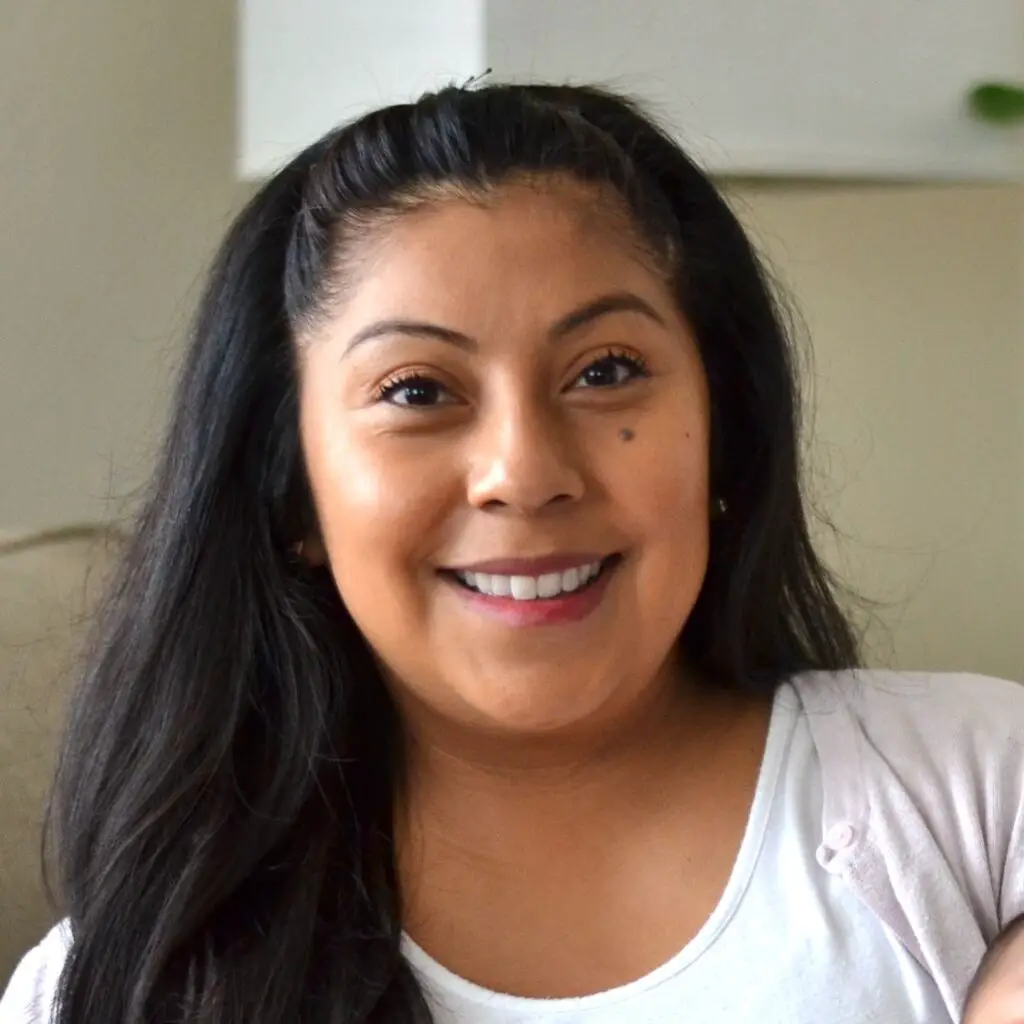
Hello, I am Leslie. I am on a mission to help you support the growth and development of your child. With the right tools and proper guidance, you can navigate parenthood with confidence and assertion! My goal is to equip you with knowledge to help you construct a strong foundation for your child’s life.
Suggested articles
You May Also Like

35+ Easy Montessori Sensorial Activities For 0 to 5 Years
TheseMontessori sensorial activities promote brain development in children and help them explore the world around them in a hands-on, sensory-rich way.
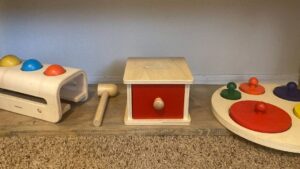
What makes a toy Montessori? 7 Characteristics To Consider
Designed with the Montessori educational philosophy in mind, Montessori toys are thoughtfully crafted to promote hands-on learning, encourage independent play, and help children develop important skills like problem-solving, creativity, and critical thinking.

Will Ceiling Fan Make Newborn Sick? Things To Know
No, a ceiling fan will not make your newborn sick. In fact, it helps maintain a comfortable and cool environment and lowers the risk of SIDS because it improves air circulation.
